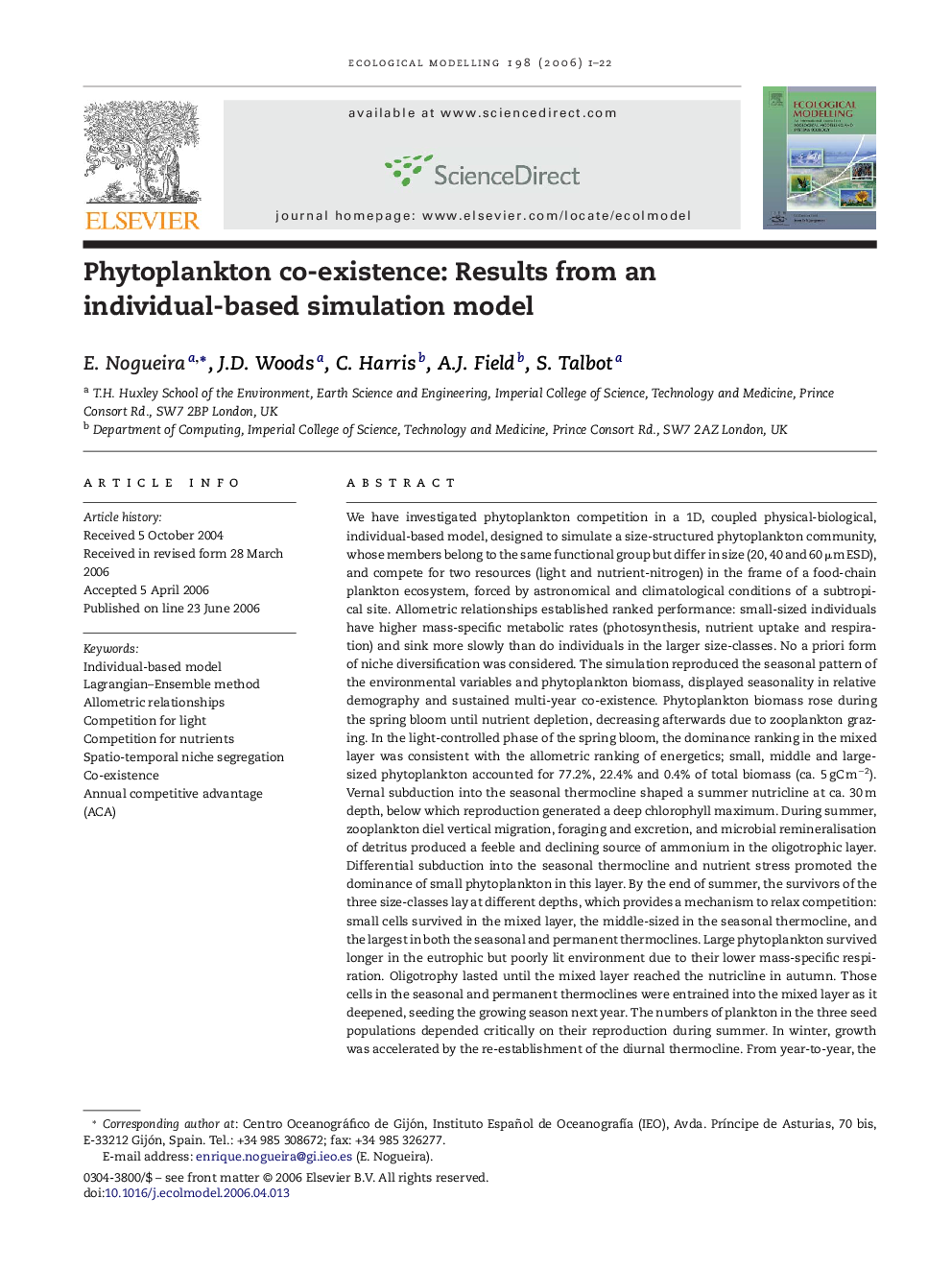| Article ID | Journal | Published Year | Pages | File Type |
|---|---|---|---|---|
| 4378833 | Ecological Modelling | 2006 | 22 Pages |
Abstract
We have investigated phytoplankton competition in a 1D, coupled physical-biological, individual-based model, designed to simulate a size-structured phytoplankton community, whose members belong to the same functional group but differ in size (20, 40 and 60 μm ESD), and compete for two resources (light and nutrient-nitrogen) in the frame of a food-chain plankton ecosystem, forced by astronomical and climatological conditions of a subtropical site. Allometric relationships established ranked performance: small-sized individuals have higher mass-specific metabolic rates (photosynthesis, nutrient uptake and respiration) and sink more slowly than do individuals in the larger size-classes. No a priori form of niche diversification was considered. The simulation reproduced the seasonal pattern of the environmental variables and phytoplankton biomass, displayed seasonality in relative demography and sustained multi-year co-existence. Phytoplankton biomass rose during the spring bloom until nutrient depletion, decreasing afterwards due to zooplankton grazing. In the light-controlled phase of the spring bloom, the dominance ranking in the mixed layer was consistent with the allometric ranking of energetics; small, middle and large-sized phytoplankton accounted for 77.2%, 22.4% and 0.4% of total biomass (ca. 5 gC mâ2). Vernal subduction into the seasonal thermocline shaped a summer nutricline at ca. 30 m depth, below which reproduction generated a deep chlorophyll maximum. During summer, zooplankton diel vertical migration, foraging and excretion, and microbial remineralisation of detritus produced a feeble and declining source of ammonium in the oligotrophic layer. Differential subduction into the seasonal thermocline and nutrient stress promoted the dominance of small phytoplankton in this layer. By the end of summer, the survivors of the three size-classes lay at different depths, which provides a mechanism to relax competition: small cells survived in the mixed layer, the middle-sized in the seasonal thermocline, and the largest in both the seasonal and permanent thermoclines. Large phytoplankton survived longer in the eutrophic but poorly lit environment due to their lower mass-specific respiration. Oligotrophy lasted until the mixed layer reached the nutricline in autumn. Those cells in the seasonal and permanent thermoclines were entrained into the mixed layer as it deepened, seeding the growing season next year. The numbers of plankton in the three seed populations depended critically on their reproduction during summer. In winter, growth was accelerated by the re-establishment of the diurnal thermocline. From year-to-year, the relative demographic success (the annual competitive advantage, ACA) of the competing populations depends critically of their relative energetics and the biomasses in the seed populations. Taken together, these two factors yielded negligible ranking among the size-classes, and thus co-existence was achieved over three simulated years despite substantial seasonal variation in competitive advantage.
Related Topics
Life Sciences
Agricultural and Biological Sciences
Ecology, Evolution, Behavior and Systematics
Authors
E. Nogueira, J.D. Woods, C. Harris, A.J. Field, S. Talbot,
